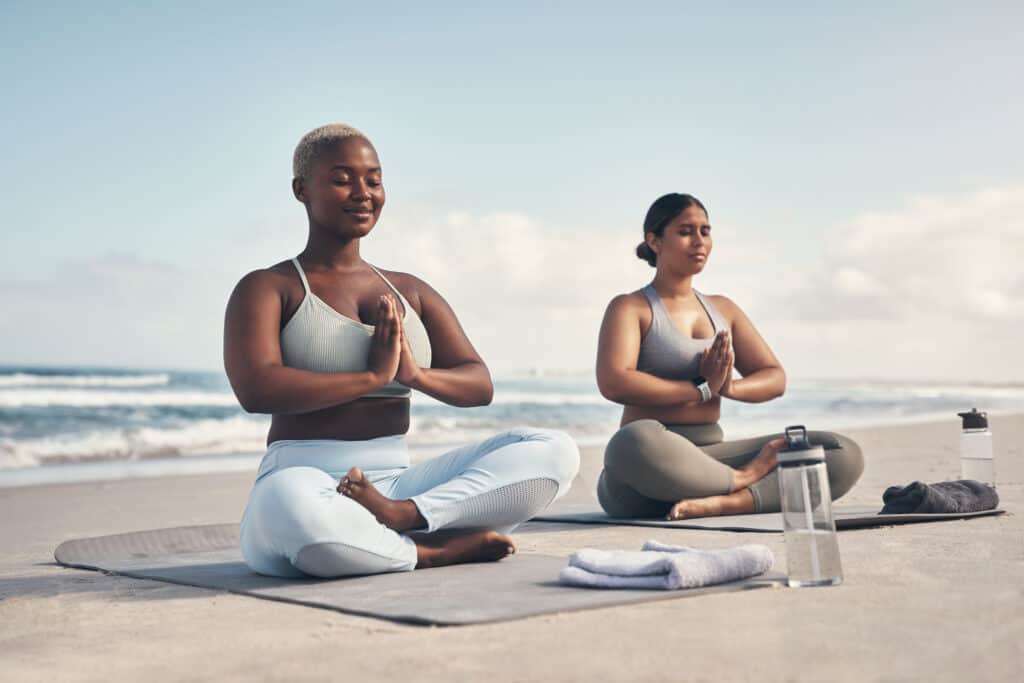Discover the transformative power of breathing exercise techniques in this comprehensive guide. As you explore these practices, gain insight into how to utilize your breath for improved mental sharpness, emotional stability, and physical health.
From diaphragmatic breathing to ancient yogic pranayama techniques like alternate nostril breathing and Bhramari Pranayama, each method offers unique benefits tailored to specific needs. We will also explore Iyengar yoga’s approach to breath control as well as other popular methods such as box breathing and lion’s breath.
By mastering these powerful breathing exercise techniques, you can elevate your spiritual journey while enhancing overall health and vitality. So join us on this enlightening exploration of the art of conscious respiration.
Diaphragmatic Breathing

Diaphragmatic breathing, also known as belly breathing, is a technique that involves using the diaphragm to take deep breaths. This can help relieve tension and promote relaxation by engaging the body’s natural calming response. Practice this technique for 5 to 10 minutes, 3 to 4 times daily.
Steps for Proper Diaphragmatic Breathing
- Sit or lie down comfortably: Find a quiet place where you can sit or lie down without any distractions. Ensure your posture is upright and your shoulders are loose.
- Place one hand on your chest and the other on your abdomen: This will help you monitor which part of your body moves during inhalation and exhalation.
- Inhale slowly through your nose: As you breathe in, focus on expanding your abdomen rather than lifting up your chest. Your hand placed on the abdomen should rise while the one on the chest remains still.
- Pause briefly before exhaling: Hold onto that full breath for a moment before gently releasing it through pursed lips or an open mouth with control over airflow (avoid forcing air out).
- Fully exhale while contracting abdominal muscles: Your hand placed on the abdomen should fall as you expel all of the air from within yourself, once again keeping movement minimal at upper torso level (chest area).
The key here is maintaining awareness throughout each step so as not only to achieve proper form but develop mindfulness around our own bodily sensations & emotions tied into these actions – ultimately leading towards greater overall well-being when practiced consistently over time.
Benefits of Regular Practice
- Reduced stress and anxiety: Diaphragmatic breathing activates the body’s relaxation response, helping to reduce stress and anxiety.
- Better oxygen delivery: Deep breaths improve oxygen exchange in your lungs, which can enhance overall physical performance.
- Lowers blood pressure: Consistent practice of diaphragmatic breathing has been shown to help lower high blood pressure by promoting relaxation.
- Pain management: Focusing on deep abdominal breaths may help divert attention from pain and discomfort while providing a sense of calmness & control over one’s own body during times when it feels otherwise out-of-reach due to chronic illness or injury recovery periods alike.
By regularly engaging in diaphragmatic breathing, one can reap the various rewards this easy yet effective practice offers. With regular practice, you’ll be able to experience the numerous benefits this simple yet powerful technique offers.
Diaphragmatic breathing is an effective technique for improving respiratory health and overall well-being. By contrast, alternate nostril breathing has been found to be a powerful tool in achieving mental clarity and calming the mind.
Alternate Nostril Breathing
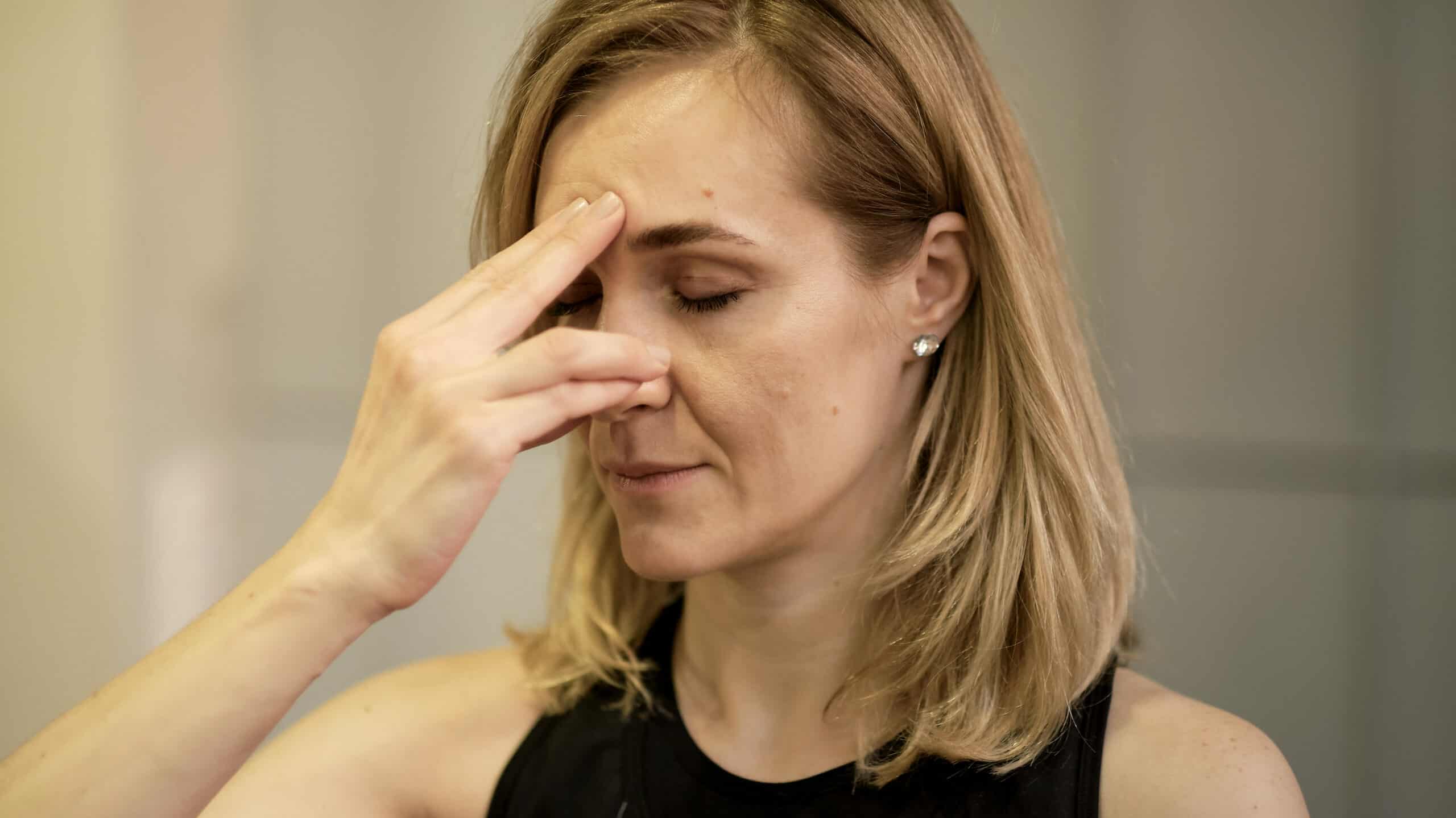
Alternate nostril breathing is an ancient yogic practice that helps balance the mind and body, enhancing cardiovascular function and lowering heart rate. By alternating between each nostril during inhalation and exhalation, you create a harmonious flow of energy throughout your system.
How to Perform Alternate Nostril Breathing Correctly
- Sit comfortably with your spine straight and shoulders relaxed.
- Place your left hand on your left knee, palm facing up or in a mudra position (optional).
- Bring your right hand up towards your nose using your thumb to close off the right nostril and ring finger for the left.
- Inhale slowly through the left nostril by closing off the right one with your thumb. Fill up as much air as possible into your lungs.
- Gently close both nostrils using your thumb & ring finger; hold your breath momentarily before exhaling out from the right side by releasing only thumb pressure.
Alternate nostril breathing is an effective practice for calming the mind and promoting physical relaxation. Iyengar yoga breath control offers a unique approach to developing greater awareness of one’s breath, which can help cultivate deeper states of well-being.
Iyengar Yoga Breathing Techniques
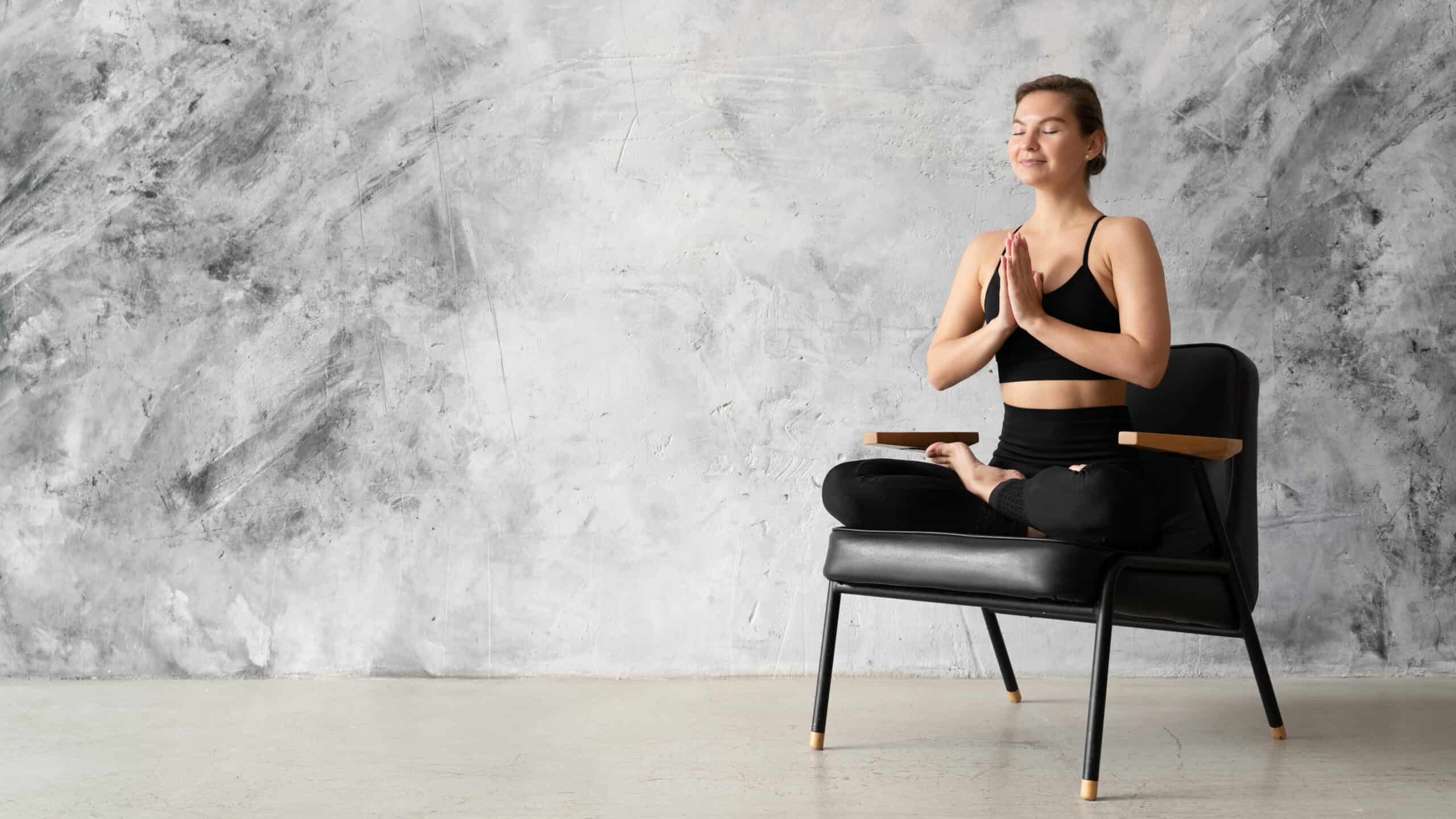
Iyengar yoga is a form of Hatha yoga that emphasizes precision in alignment and the use of props to support practitioners in achieving optimal postures. This practice also incorporates specific breathing techniques designed to reduce stress levels and improve overall well-being.
One such method requires practitioners to breathe at a rate of five full breaths per minute, enhancing mental clarity and promoting relaxation.
Key Principles of Iyengar Yoga Breath Control
In Iyengar yoga, proper breath control (also known as pranayama) plays an essential role in enhancing physical strength, flexibility, and balance while calming the mind. Some key principles include:
- Focusing on inhalation and exhalation: By paying close attention to each inhale and exhale, you can develop greater awareness of your body’s natural rhythms.
- Maintaining evenness: Aim for consistency in both the length and depth of your breaths throughout your practice.
- Using props: Props like blankets or bolsters can help support proper posture during seated pranayama exercises.
- Prioritizing safety: Avoid forceful or rapid breathing if you have any respiratory issues or medical conditions that could be aggravated by these practices.
Examples of Effective Exercises
To experience the benefits associated with Iyengar yoga breathing techniques, consider incorporating some effective exercises into your routine. These may include:
- Ujjayi Pranayama: Also known as the “ocean breath,” Ujjayi pranayama involves slightly constricting your throat while inhaling and exhaling through your nose. This creates a soothing sound that can help focus your mind.
- Nadi Shodhana: As mentioned earlier, alternate nostril breathing (Nadi Shodhana) is an effective Iyengar yoga technique for balancing energy levels and promoting relaxation. You can learn more about this practice in our section on Alternate Nostril Breathing.
- Viloma Pranayama: This exercise involves pausing briefly during inhalation or exhalation to create a sense of spaciousness within the breath. It helps improve lung capacity and concentration by encouraging deeper, more mindful breathing.
By honing in on accuracy, posture, and appropriate breath control, you can better manage stress levels while experiencing heightened mental clarity. By focusing on precision, alignment, and proper breath control, you’ll be better equipped to manage stress levels while enjoying increased clarity of mind.
Iyengar yoga breathing exercises can be a great way to foster overall well-being, providing an uncomplicated yet efficient method for controlling respiration. Moving on from this foundational practice, Humming Bee Breath (Bhramari Pranayama) offers another powerful tool for improving health and wellness.
Humming Bee Breath (Bhramari Pranayama)
Bhramari pranayama, also known as humming bee breath, is a powerful yogic exercise involving loud humming while exhaling slowly through the nose. This technique calms the mind and improves concentration levels by stimulating certain areas within our brain responsible for memory retention. This section will explore how to practice Bhramari pranayama and its potential health benefits.
Step-by-step guide on practicing Bhramari pranayama
- Sit comfortably in a quiet space with your spine erect and shoulders relaxed.
- Close your eyes gently and take a few deep breaths to center yourself.
- Place your index fingers on the cartilage between your cheeks and ears. This helps to close off external sounds during practice.
- Inhale deeply through both nostrils, filling up your lungs completely.
- As you exhale, make a humming noise like the buzz of a bee – feel its vibrations in your head and chest. Take a deep breath and hum out with a low pitch, allowing the vibrations to resonate through your head and torso.
Potential health benefits
- Mental relaxation: The soothing vibrations produced during Bhramari pranayama help calm an overactive mind, significantly reducing stress and anxiety levels.
- Improved concentration: This technique can enhance focus and mental clarity by stimulating the brain’s memory retention areas, making it an excellent tool for students or professionals.
- Better sleep: Practicing humming bee breath before bedtime can help relax your nervous system and promote better sleep quality. It is especially beneficial for those suffering from insomnia or other sleep disorders.
- Sinus relief: The vibrations generated during Bhramari pranayama may help clear nasal congestion and alleviate sinus pressure by increasing blood circulation in the facial area.
Incorporating Bhramari pranayama into your daily routine can provide numerous physical and mental benefits. Therefore, seeking advice from a knowledgeable yoga teacher or medical practitioner is advisable before incorporating Bhramari pranayama into your daily practice.
Humming Bee Breath (Bhramari Pranayama) is a simple yet effective breathing exercise that can be used to promote relaxation and reduce stress.
Breathing Technique for Respiratory Issues
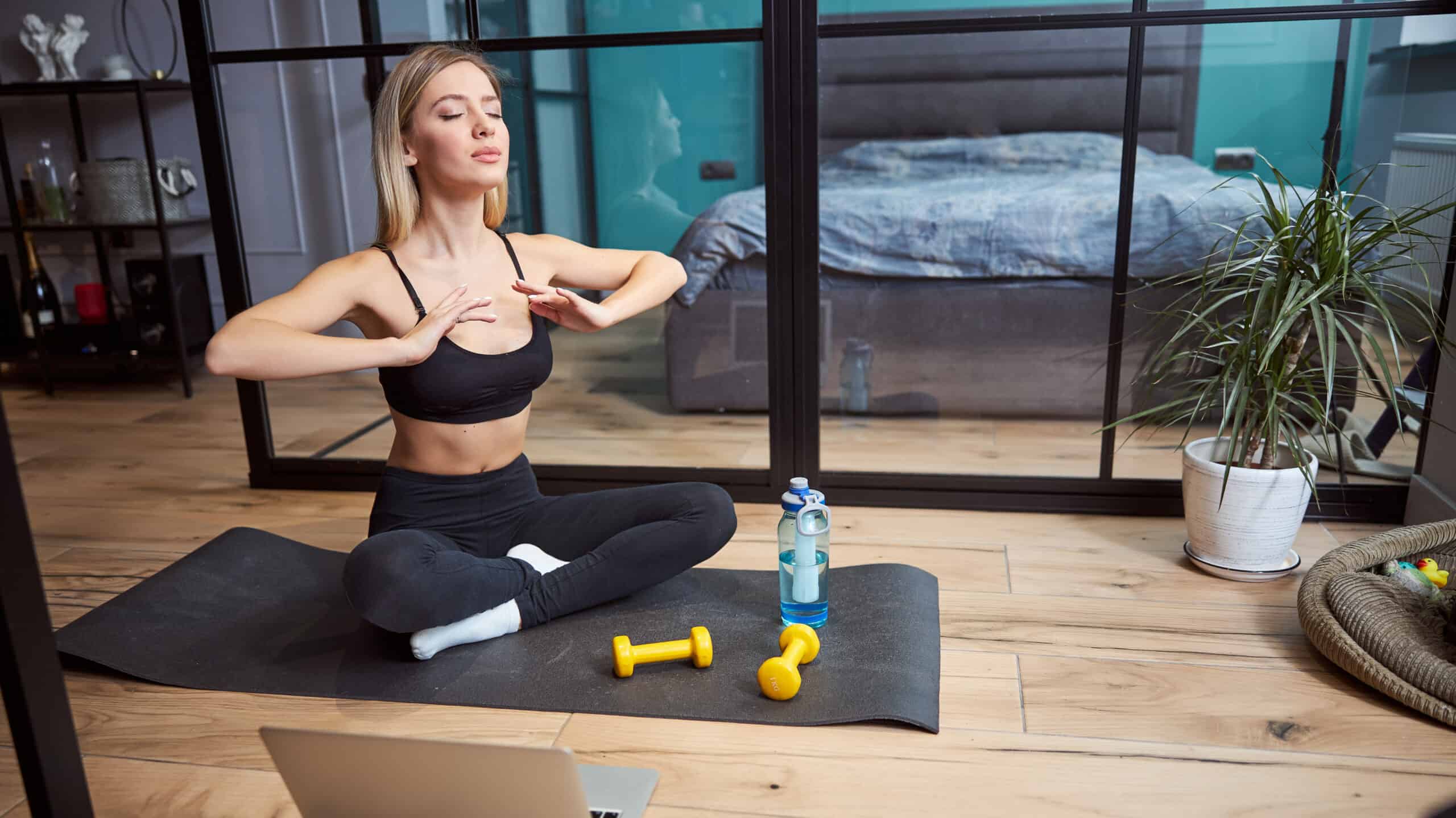
Individuals with respiratory issues, such as asthma or chronic obstructive pulmonary disease (COPD), can benefit from practicing a specific breathing technique called pursed-lip breathing. Pursed-lip breathing can help improve lung capacity and oxygen exchange while slowing the respiration rate, reducing breathlessness, and inducing a sense of calm.
How to Practice Pursed-Lip Breathing
- Inhale slowly through your nose for two counts while keeping your mouth closed.
- Purse your lips as if you were about to whistle or blow out a candle.
- Exhale gently through your pursed lips for four counts. Make sure that the exhalation is twice as long as the inhalation.
- Repeat this process until you feel more relaxed and in control of your breaths.
This technique can be utilized to manage breathlessness or respiration problems like asthma and COPD in any location, anytime. It is essential to maintain consistency in practice for better results over time.
When to Use Pursed-Lip Breathing Technique
- Daily practice: Incorporate pursed-lip breathing into your daily routine to help manage respiratory symptoms and improve overall lung function.
- During physical activity: Utilize this technique while exercising or engaging in any strenuous activities that may trigger shortness of breath.
- Stress can exacerbate respiratory issues in times of stress, so practicing pursed-lip breathing during stressful situations can help you maintain control over your breaths and promote relaxation.
Pursed-lip breathing is valuable for individuals with asthma, COPD, or other respiratory conditions. Slowing down the breathing rate and promoting deeper breaths help improve lung capacity and oxygen exchange. Regular practice can lead to better management of symptoms and an enhanced quality of life. For more information on managing respiratory issues through various techniques, consult a healthcare professional or visit the American Lung Association.
Inhaling and exhaling in a certain manner can be an advantageous way to lessen tension and augment general health.
Box Breathing (4-4-4 Technique)
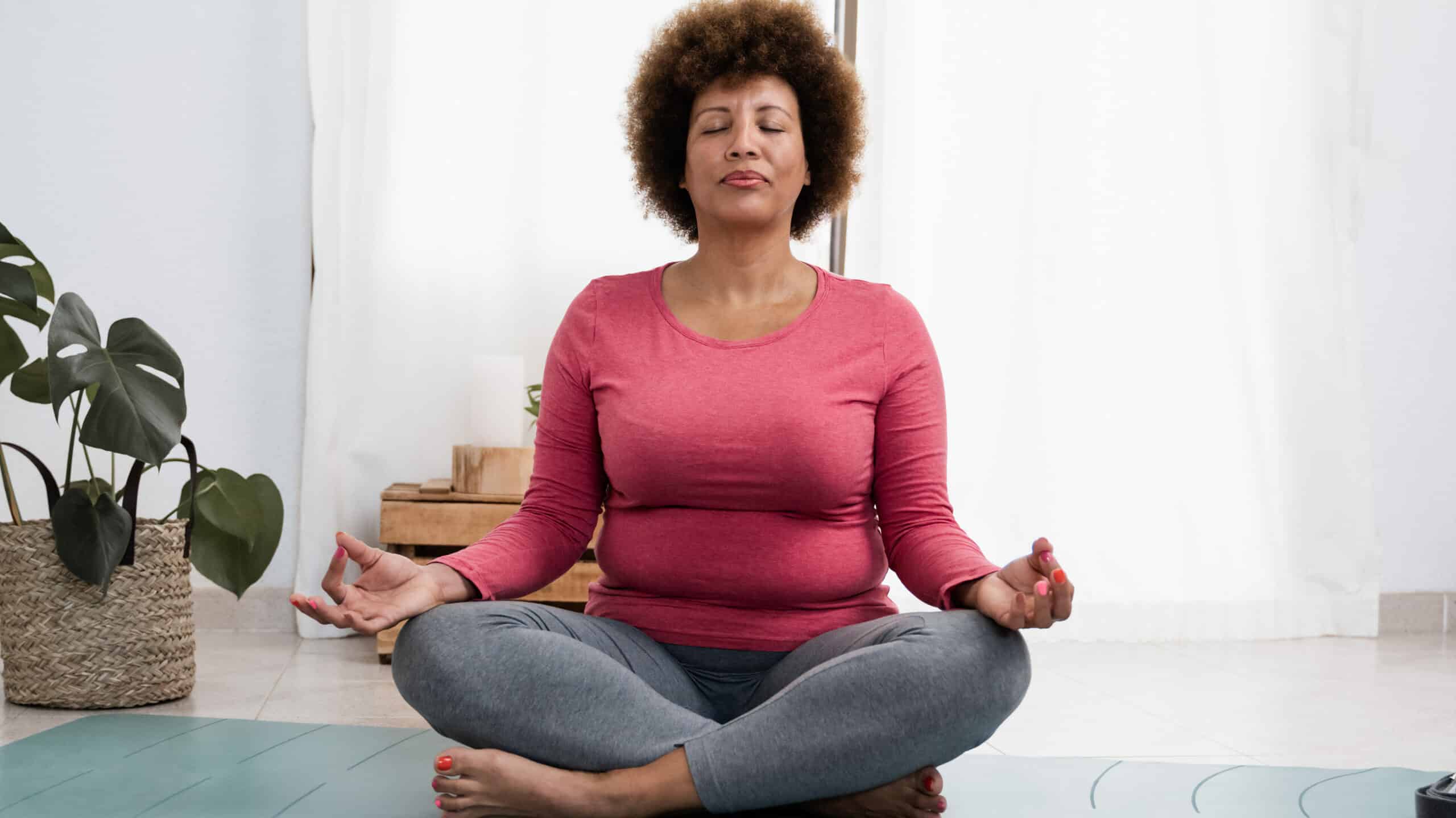
The 4-4-4 technique, or box breathing as it is commonly known, involves taking in air for four seconds, holding the breath for another four seconds, and exhaling slowly over a period of four more seconds before repeating the cycle. This rhythmic breathing method can help manage stress levels, increasing focus and mental clarity. It has been widely used by athletes, military personnel, and individuals seeking to improve their overall well-being.
Detailed Instructions on Box Breathing
- Find a comfortable spot to sit or recline, with your spine upright.
- Take a few deep breaths to focus your attention and prepare for the exercise.
- Inhale slowly through your nose for a count of four seconds.
- Hold your breath gently at the top of the inhalation for another count of four seconds.
- Exhale slowly through your mouth or nose (whichever feels more natural) for a count of four seconds.
- Pause after exhaling without taking in any air for an additional count of four seconds.
This completes one round of box breathing. Repeat this procedure multiple times until you sense a feeling of serenity and improved concentration. You may gradually increase the duration if desired but always maintain an equal ratio between inhalation, retention, exhalation & pause periods during practice sessions.
Benefits of Incorporating Box Breathing into Daily Routines
- Promotes relaxation: By focusing on slow & controlled breaths using the box technique helps activate our body’s parasympathetic nervous system, which promotes relaxation and reduces stress levels.
- Improves focus & concentration: The practice of box breathing requires mental discipline to maintain the 4-second counts consistently. This act of mindfulness helps improve our ability to concentrate on the tasks at hand.
- Better sleep quality: Practicing box breathing before bedtime can help calm an overactive mind, making it easier to fall asleep and enjoy a more restful night’s slumber.
- Eases anxiety symptoms: Box breathing has been shown to be effective in managing anxiety symptoms, as it provides a grounding technique that allows individuals to regain control over their thoughts and emotions during periods of heightened stress or panic attacks.
Incorporating box breathing into your daily routine can provide numerous benefits for both physical and emotional well-being. Whether you’re seeking relief from chronic stress, improved focus, or simply looking for a way to unwind after a long day, this simple yet powerful technique may prove invaluable in achieving those goals.
Breathwork can be employed to sharpen the mind and lessen stress, but there are other techniques that may offer additional advantages. Lion’s Breath (Simhasana Pranayama) is one such technique that involves specific postures and breaths that work together to create an energizing effect.
Lion’s Breath (Simhasana Pranayama)
Lion’s breath, also known as Simhasana pranayama, is an energizing yoga technique that releases tension in facial muscles while improving blood circulation throughout the body. By opening your mouth wide and sticking out your tongue as you exhale forcefully through your mouth, you can experience instant rejuvenation. In this section, we will discuss how to perform a lion’s breath correctly and explore situations where it can be helpful for spiritual seekers and those looking to improve their well-being.
Steps to Perform Lion’s Breath Correctly
- Sit comfortably on the floor or a mat with your legs crossed or in any other comfortable seated position.
- Place your hands on your knees with palms facing down.
- Inhale deeply through your nose, filling up the lungs completely.
- As you exhale, open your maw and protrude the tongue towards the chin. Attempt to touch the tip of your tongue to your chin as you exhale.
- While exhaling forcefully through the mouth, make a “ha” sound from deep within the throat like a roaring lion.
- Yoga Journal recommends keeping eyes wide open during exhalation and focusing gaze on the space between eyebrows (third eye).
Situations Where Lion’s Breath Can Be Helpful
Lion’s breath offers several benefits, making it suitable for various situations:
- Easing stress: The forceful exhalation helps release pent-up emotions such as anger or frustration, which may contribute towards reducing stress levels. Healthline suggests practicing lion’s breath to help manage stress and anxiety.
- Relieving tension: This technique stretches facial muscles, which can help alleviate tension headaches or discomfort caused by clenching the jaw during stressful situations.
- Improving focus: Lion’s breath requires concentration on the physical act of exhaling while maintaining a steady gaze. Focusing on exhaling while maintaining a steady gaze can help sharpen mental clarity and heighten alertness, making it beneficial for those wanting increased concentration in their lives.
- Energizing the body: The forceful exhalation stimulates blood circulation throughout the body, providing an instant energy boost that leaves practitioners feeling refreshed and invigorated after each session.
Incorporating lion’s breath into your wellness routine can provide numerous benefits for both physical and emotional well-being. Try this powerful technique next time you need a quick pick-me-up or want to release some built-up tension from your day.
Lion’s Breath (Simhasana Pranayama) effectively reduces stress and increases relaxation when practiced correctly. Moving on, the next heading will discuss 3-part breath (Dirga Pranayama), which can be used to improve physical and emotional well-being.
3-part Breath (Dirga Pranayama)
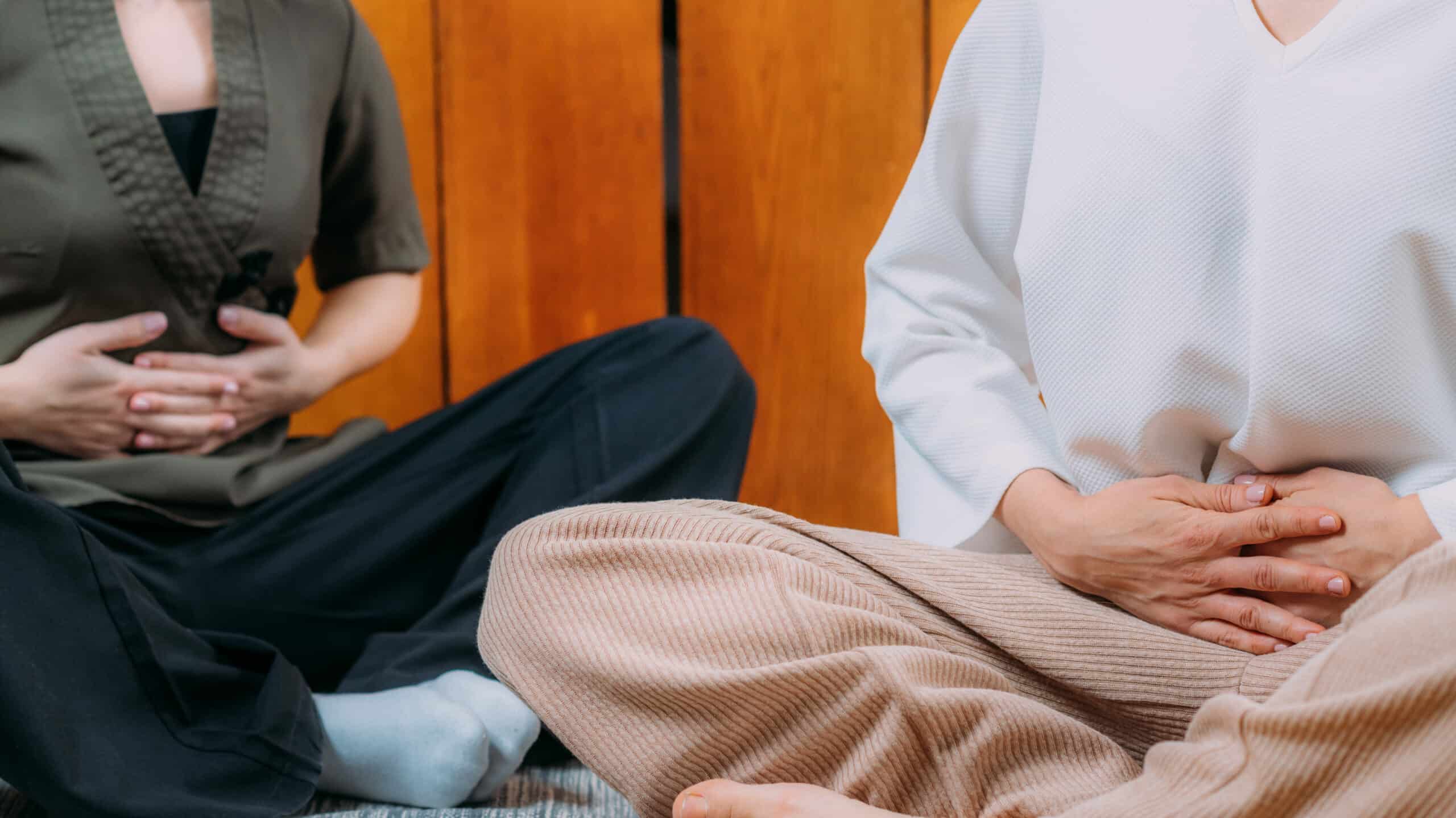
The 3-part breath, or Dirga pranayama, is a powerful breathing technique that focuses on filling three different areas of our torso during inhalation – the lower belly, ribcage area, and upper chest. This full-body approach promotes deep relaxation by allowing more oxygen-rich air into our system, which aids in stress reduction and improved overall health.
Methods to Master 3-Part Breathing
- Find a comfortable position: Sit or lie down in a relaxed posture with your spine straight. Take a few deep breaths to relax and center your body.
- Inhale into the lower belly: Place one hand on your lower abdomen just below the navel. As you inhale slowly through your nose, feel your abdomen expand like a balloon under your hand. Make sure not to force the breath; allow it to flow naturally.
- Breathe into the ribcage: Move both hands onto either side of the ribcage while keeping them slightly apart. Inhale further until you can feel this part of your torso expanding outward as well as upward.
- Filling up the upper chest: Bring one hand onto the center of the chest near the collarbone & continue inhaling until the entire lung capacity has been filled with air without straining yourself too much in the process.
- Gentle exhalation: Slowly exhale through the nose releasing all accumulated tension along the way before repeating the cycle again for several rounds at least five minutes daily practice recommended maximum benefits achieved over time.
Impact on Physical & Emotional Well-being
Performing 3-part breathing consistently can significantly influence your mental and physical health. Some of the key benefits include:
- Reduced stress and anxiety: By focusing on deep, rhythmic breathing, you activate the body’s natural relaxation response, which helps to lower cortisol levels and promote a sense of calm.
- Better lung capacity: This technique encourages full utilization of our lungs’ capacity for oxygen intake, leading to improved respiratory function & overall health especially beneficial to those suffering from chronic obstructive pulmonary disease or other related conditions.
- Pain management: Deep breathing has been shown in numerous studies like this one published by National Center Biotechnology Information (NCBI), as an effective way to manage pain symptoms associated with various ailments including fibromyalgia arthritis migraines among others
- Mental clarity and focus: The act of consciously directing attention towards breath allows us to clear away mental clutter and increase concentration abilities making it an ideal practice to incorporate into daily routines work school life etcetera where sustained needed most.
Incorporating Dirga pranayama into your regular wellness routine can provide lasting mental and physical benefits. Give yourself the gift of mindful breathing today.
Dirga Pranayama is an ancient breathing technique that can help to reduce stress and improve physical and emotional well-being. The next heading will explore the cooling breath, a practice that helps to cool down the body in times of high temperatures or during intense exercise.
Cooling Breath
The cooling breath, also known as Sitali pranayama, is a unique yogic practice designed specifically for hot summer days when overheating becomes an issue. Inhaling slowly through a rolled-up tongue followed by exhalations from the nostrils provides a natural cooling effect that instantly refreshes mind and body.
Proper Technique for Sitali Breath
- Sit in a position that is at ease, with your back upright and your shoulders tranquil.
- Take a few calming breaths to bring your focus inward.
- Curl the sides of your tongue up into a tube-like shape. If you cannot roll your tongue, make an “O” shape with your lips instead.
- Inhale slowly through the rolled-up tongue or pursed lips, feeling the cool air entering your mouth and traveling down into your lungs.
- Close your mouth gently after inhaling fully, then exhale smoothly through both nostrils without force or strain.
- Repeat this process for several rounds (5-10 minutes) to experience its full benefits on hot days or whenever you need some instant relief from heat-induced discomforts like headaches or fatigue.
When to Use This Cooling Method
- Mental relaxation: Sitali breath can help calm an agitated mind, making it a useful technique to practice during moments of stress or anxiety.
- Physical cooling: As mentioned earlier, this breathing method is perfect for hot summer days when you need some instant relief from the heat. It can also be beneficial after intense physical activities like running or hiking that may cause overheating.
- Balancing Pitta dosha: In Ayurvedic medicine, Sitali pranayama is known to balance the Pitta dosha (fire element) in our body which governs digestion and metabolism. This makes it particularly helpful for individuals with a predominant Pitta constitution who tend to experience excessive heat-related issues such as inflammation or heartburn.
To explore more about how different breathing techniques affect your overall well-being and discover other practices tailored specifically to your unique needs, check out this comprehensive guide on yogic breathwork by Yoga Journal.
Inhaling deeply and slowly can be a great way to chill out while simultaneously aiding in mental clarity. Breath of Fire (Kapalabhati Pranayama) provides an even more intense form of pranayama breathing which requires careful technique in order to be performed safely.
Breath of Fire (Kapalabhati Pranayama)

Kapalabhati pranayama, also known as the breath of fire, is an energizing breathing exercise that involves rapid and forceful exhalations followed by passive inhalations. This powerful technique helps detoxify the body, increasing lung capacity and improving digestion. In this section, we will discuss how to perform kapalabhati pranayama safely and explore its precautions & contraindications.
How to Perform Kapalabhati Pranayama Safely
- Sit comfortably in a cross-legged position or on a chair with your spine straight and shoulders relaxed.
- Place your hands on your knees with palms facing up or down.
- Take a deep breath through your nose, filling up your lungs completely.
- Exhale forcefully through your nose by contracting your abdominal muscles quickly. Your inhalation should be passive and natural without any effort.
- Begin with 20-30 cycles and work your way up to 100-200 per session as you become more comfortable.
Note: It’s essential to maintain focus on forceful exhalation while allowing inhalation to happen naturally without any active effort from you. Also, remember not to strain yourself during the process; if you feel dizzy or lightheaded at any point, stop immediately and resume normal breathing until you feel better. Learn more about performing kapalabhati pranayama here.
Precautions & Contraindications
While kapalabhati pranayama offers numerous benefits, it’s essential to be aware of the precautions and contraindications associated with this practice. Some individuals should avoid or modify this technique due to specific health conditions:
- Pregnant women should refrain from practicing kapalabhati pranayama as forceful exhalation can put undue pressure on the abdominal region.
- Individuals with high blood pressure, heart disease, or a history of stroke should consult their healthcare provider before attempting this breathing exercise.
- If you have COPD, asthma, or any other respiratory issues, it is recommended to seek the guidance of a qualified yoga instructor who can modify the technique for your condition.
- Avoid practicing kapalabhati pranayama if you are experiencing severe headaches or migraines during that time.
Heed your body and stop the practice if you experience any kind of pain or unease. For more information on safety guidelines and contraindications related to kapalabhati pranayama, visit Yogapedia here.
Frequently Asked Questions Breathing Exercises Techniques
What are the 5 main breathing techniques?
The five main breathing techniques include diaphragmatic breathing, alternate nostril breathing, box breathing (4-4-4 technique), breath of fire (kapalabhati pranayama), and cooling breath. These practices can help improve physical and emotional well-being by promoting relaxation, reducing stress, increasing focus, and enhancing overall lung function.
What are the 4 main breathing techniques?
The four primary breathing techniques are diaphragmatic or belly-breathing, pursed-lip breathing for better oxygenation during activities like exercise or climbing stairs; deep slow inhales followed by longer exhales to calm down in stressful situations; and using a specific count such as box-breathing which helps with anxiety management. Each method serves different purposes but all contribute to improved health.
Can breathing techniques actually work?
Breathing techniques have been proven effective in managing stress levels, improving mental clarity, boosting immune system response, and increasing energy levels. Various studies support their efficacy in addressing anxiety disorders (source), asthma symptoms (source), and blood pressure regulation, among other benefits.
What are the most beneficial breathing techniques?
The most beneficial technique depends on individual needs and preferences. Diaphragmatic Breathing is great for relaxation; Alternate Nostril Breathing balances left-right brain activity; Box Breathing improves focus and reduces anxiety; Breath of Fire increases energy levels and strengthens respiratory muscles; Cooling Breath cools the body and calms the mind. Experiment with different methods to find what works best for you.
Conclusion
To sum up, including breathing techniques in your everyday life can make a big difference in both mental and physical health. From diaphragmatic breathing to kapalabhati pranayama, there are various methods to choose from, depending on your needs.
